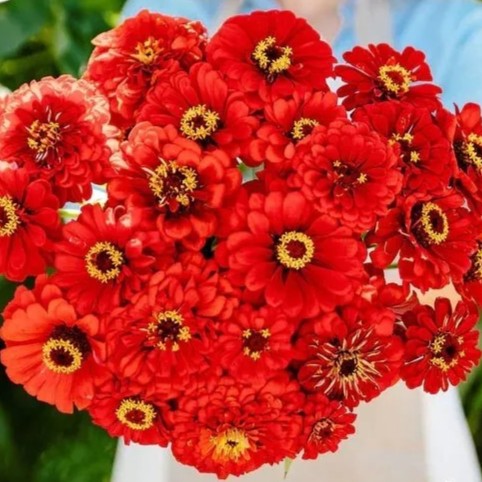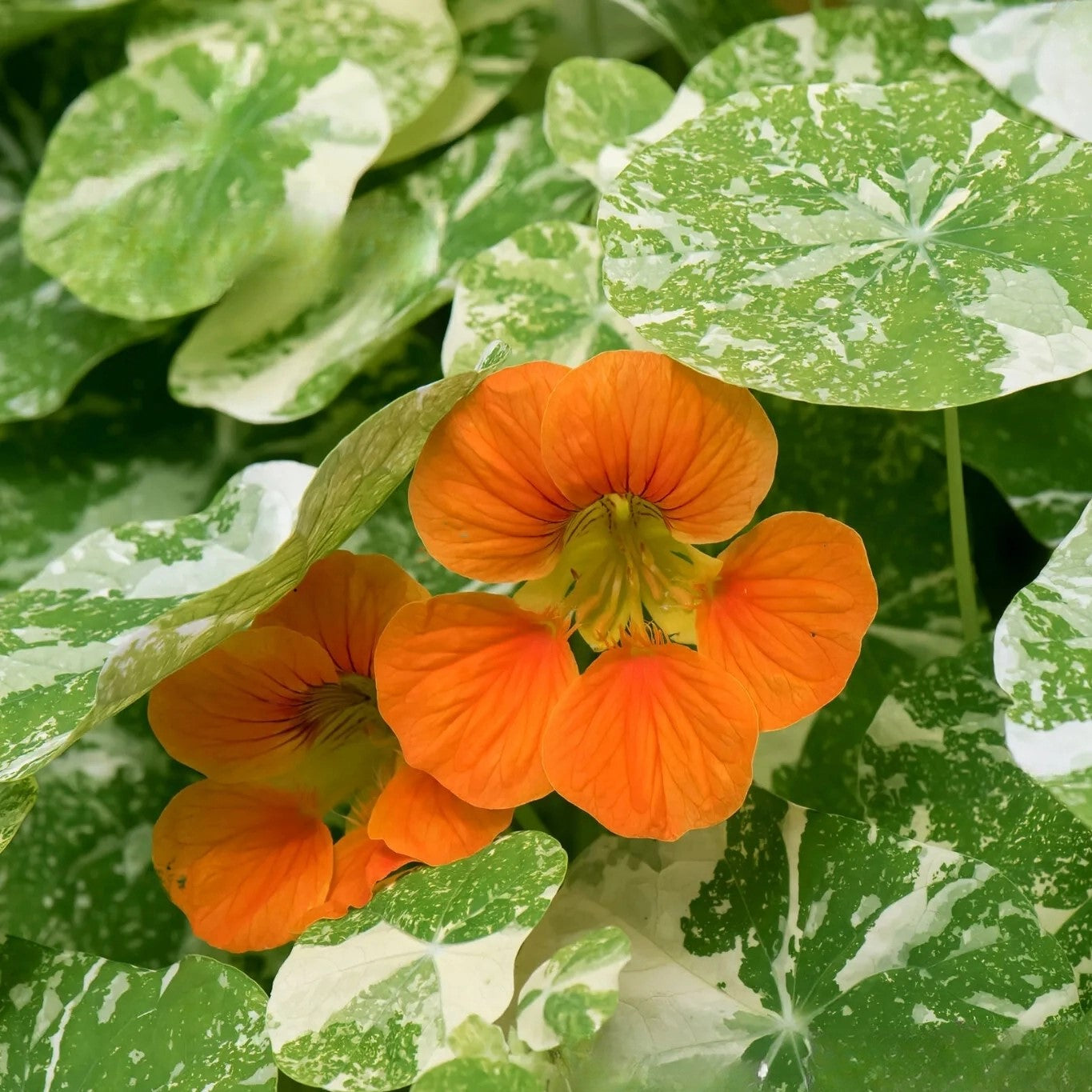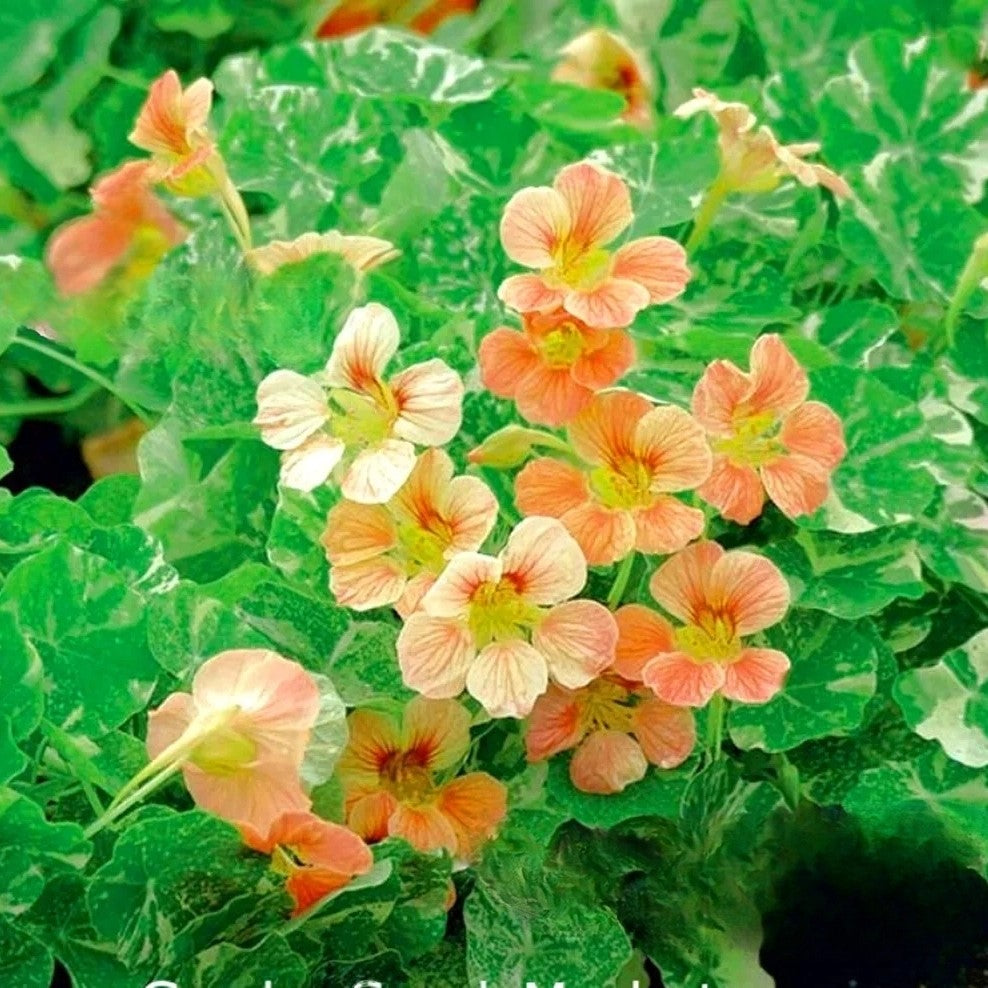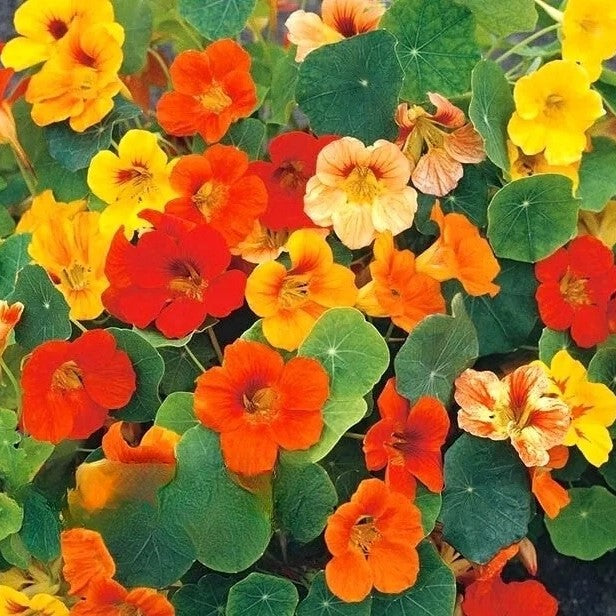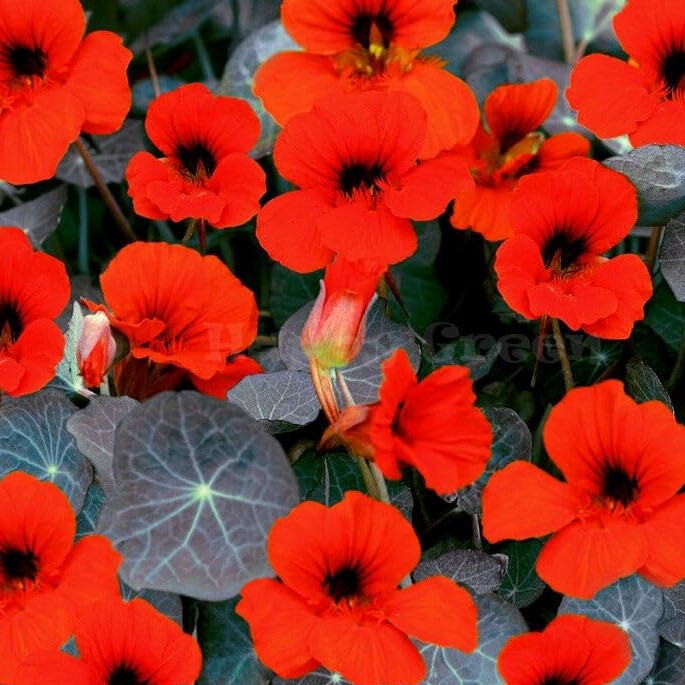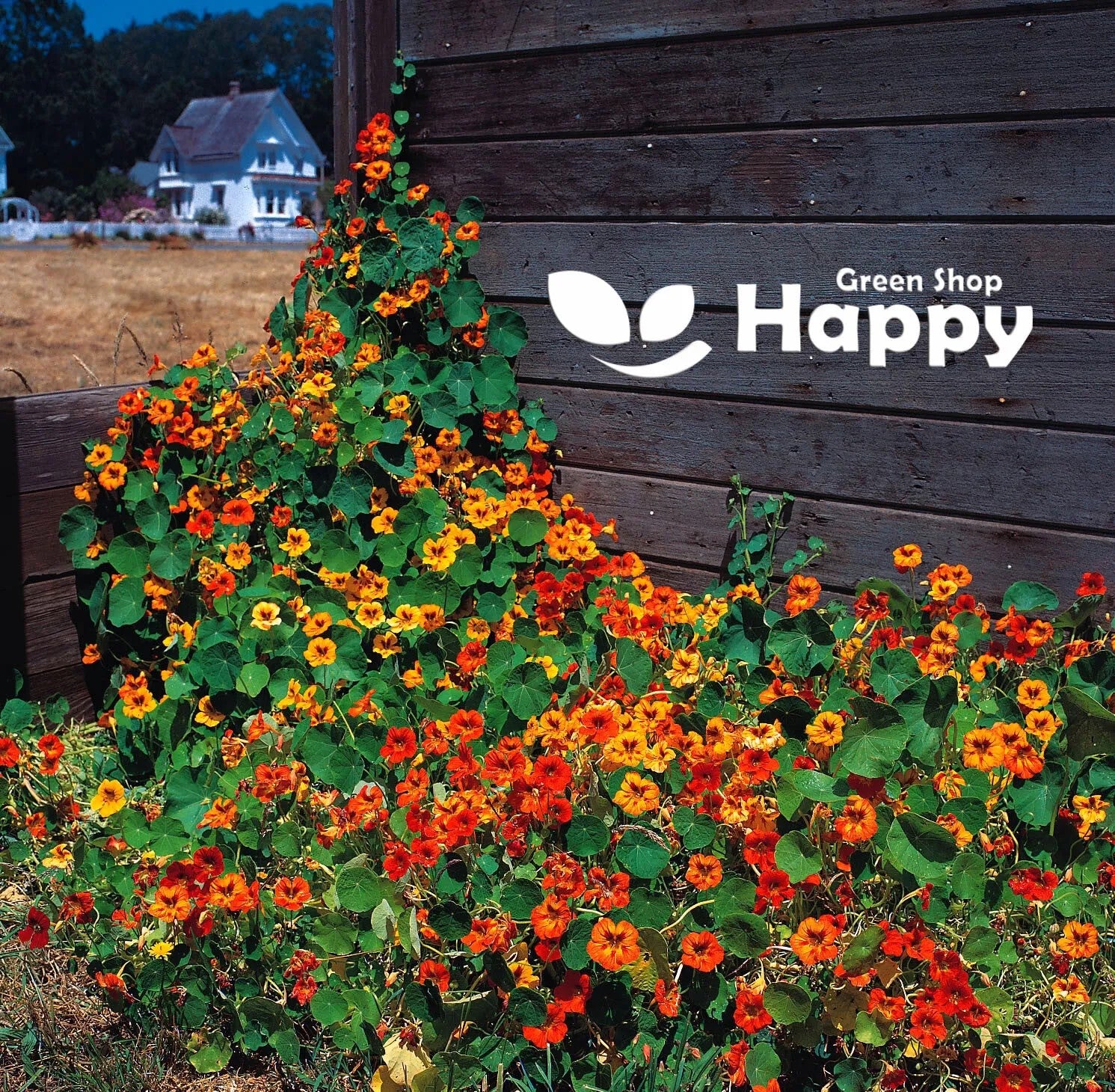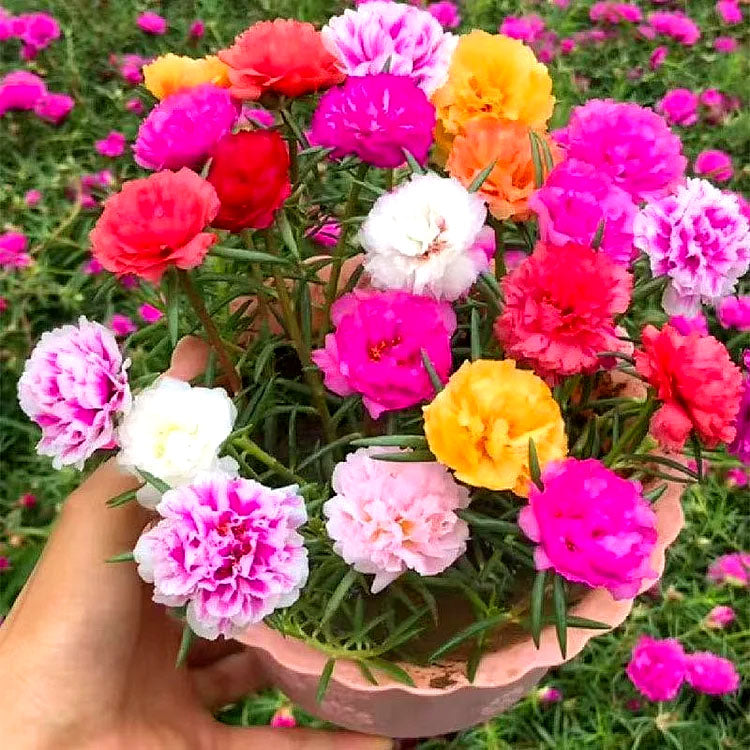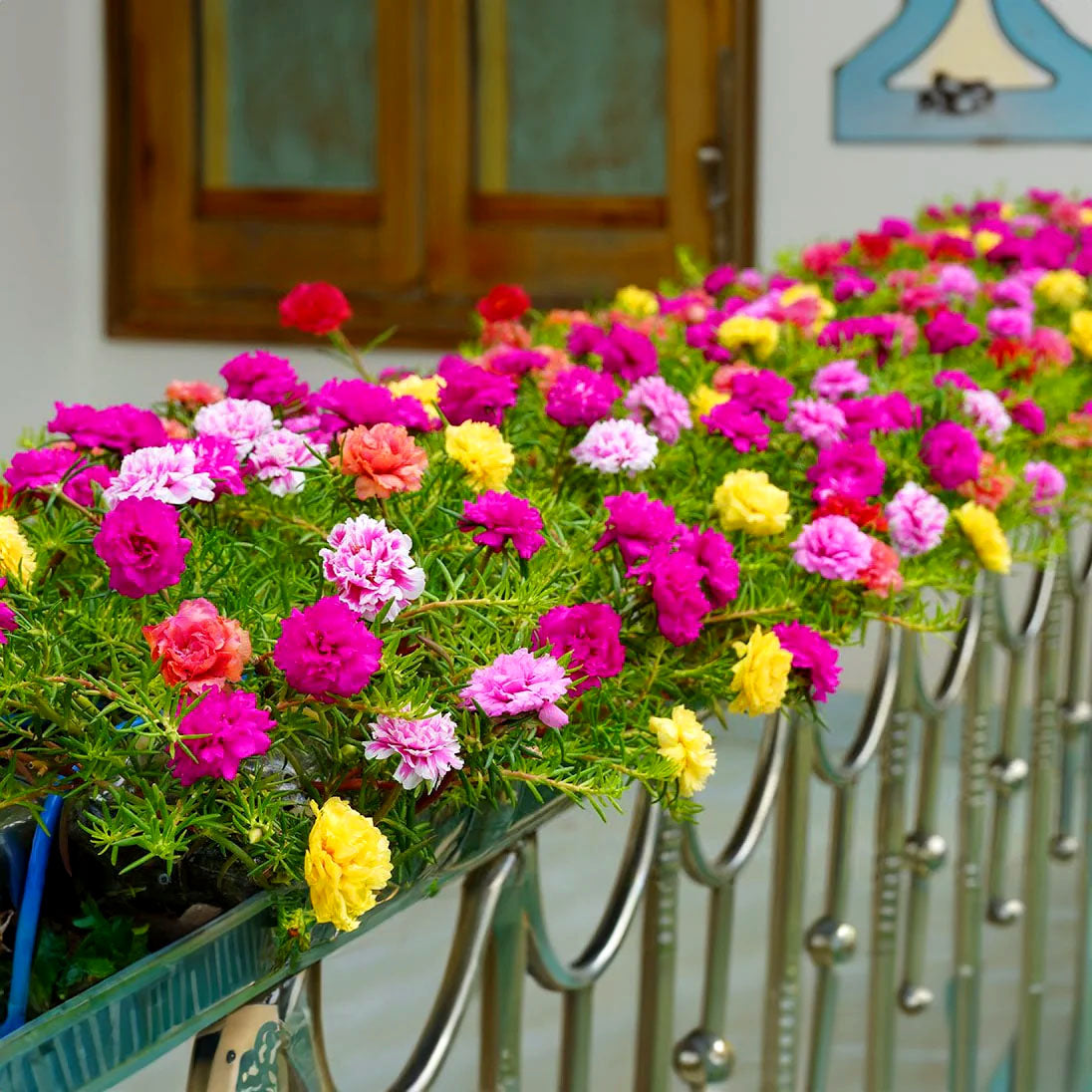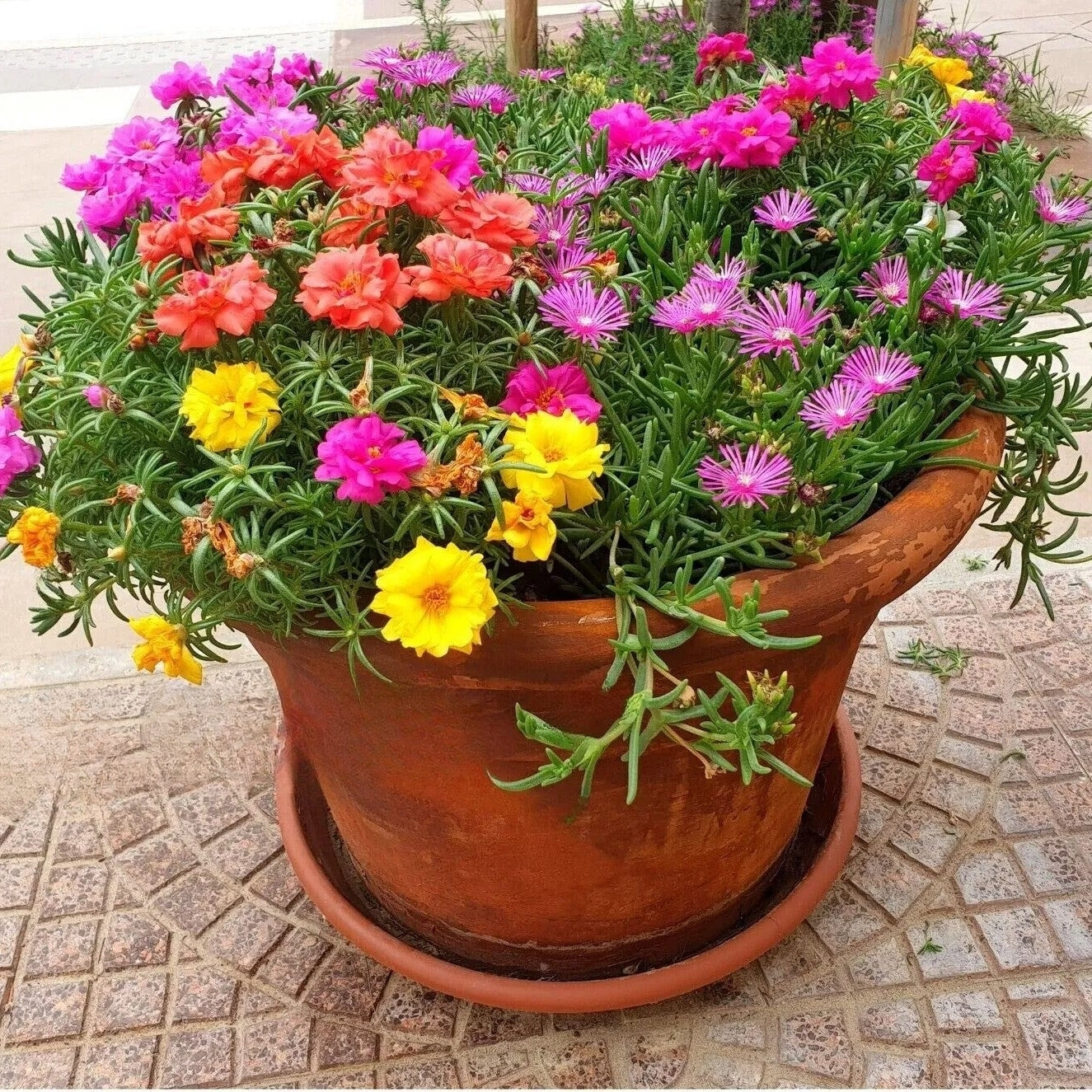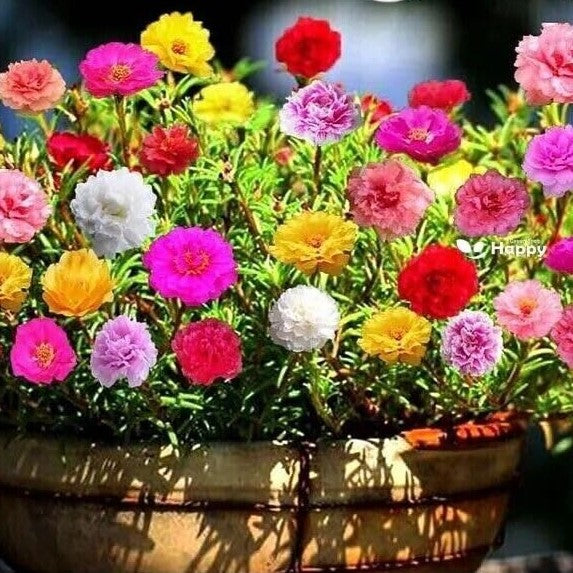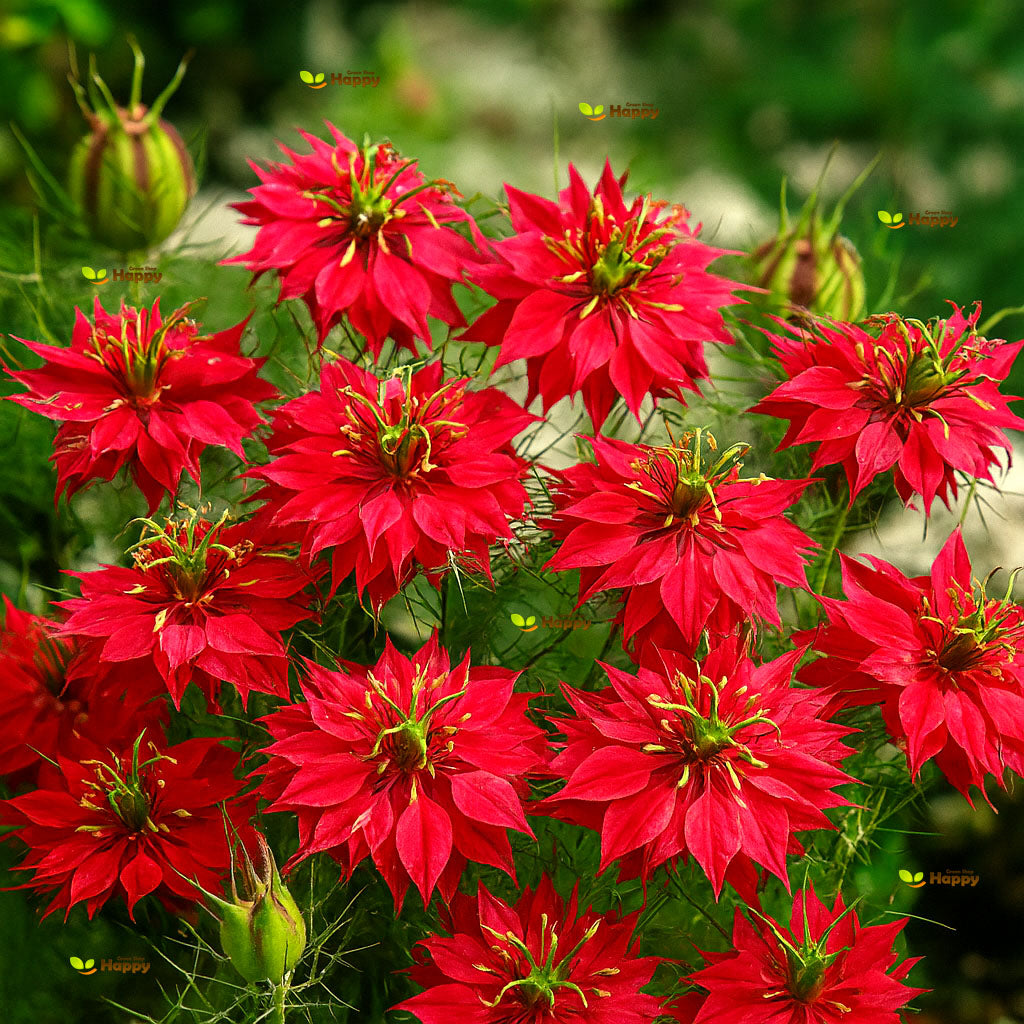Sort by:
128 products
128 products
Nasturtium 'Tom Thumb Alaska Salmon' Seeds (Tropaeolum nanum)
Add a splash of elegance with Nasturtium 'Tom Thumb Alaska Salmon'. Compact and easy to grow, this variety features salmon-pink blooms against striking variegated foliage, creating a stunning contrast in borders, containers, or hanging baskets.
What Makes It Special
-
Unique salmon blooms with decorative marbled leaves
-
Dwarf, compact habit—perfect for small spaces
-
Edible flowers and leaves with a peppery flavor
Key Features
-
Botanical name: Tropaeolum nanum
-
Half-hardy annual
-
Height: 20–30 cm
-
Spread: 25–30 cm
-
Flowering: June–September
Ideal For
-
Containers, window boxes, and borders
-
Edible gardens and companion planting
-
Adding vibrant color to small spaces
Sowing
-
Sow indoors: March–April, 1 cm deep in pots or trays
-
Germination: 10–14 days at 15–18°C
-
Harden off and transplant after last frost in sunny spot
-
Direct sow outdoors: April–May in final position
Nasturtium 'Honolulu' Seeds (Tropaeolum nanum)
Nasturtium 'Honolulu' is a charming dwarf annual with bright, cheerful flowers in shades of red, orange, and yellow. Its compact growth habit makes it ideal for containers, window boxes, and small garden beds. Easy to grow and low-maintenance, it adds a splash of vibrant color while attracting pollinators.
What Makes It Special
-
Bright, cheerful blooms in red, orange, and yellow
-
Compact, dwarf growth ideal for small spaces and containers
-
Easy to grow and low-maintenance
-
Attracts pollinators like bees and butterflies
Key Features
-
Botanical name: Tropaeolum nanum
-
Variety: 'Honolulu'
-
Seed count: Approx. seeds per pack
-
Height/Spread: 15–25 cm tall, 20–30 cm spread
-
Position: Full sun; well-drained soil
-
Flowering period: June–September
Ideal For
-
Containers, window boxes, and small garden beds
-
Borders and edging
-
Pollinator-friendly gardens
-
Brightening patios and terraces
Sowing Instructions
-
When to sow: March–May indoors or outdoors
-
How to sow:
-
Sow seeds 1–2 cm deep in seed trays or directly in pots
-
Germination occurs in 7–14 days at 18–22°C
-
-
Transplanting: Plant seedlings outdoors after frost, spacing 15–20 cm apart
-
Care: Water moderately; remove faded flowers to encourage continuous blooming
Nasturtium ‘Empress of India’ – Seeds (Tropaeolum nanum)
Nasturtium ‘Empress of India’ (Tropaeolum nanum) is a vibrant annual with striking deep red and dark foliage. Its trailing habit makes it perfect for containers, hanging baskets, and garden borders. Edible flowers and leaves add a peppery flavor to salads and garnishes, while the plant attracts pollinators, creating both beauty and utility in your garden.
Why Grow "Empress of India"
-
Deep red blooms with dark, attractive foliage
-
Trailing habit ideal for containers and hanging baskets
-
Edible flowers and leaves with a peppery taste
-
Attracts bees, butterflies, and other pollinators
Key Features
-
Type: Annual (Tropaeolum nanum)
-
Height: 20–30 cm
-
Flowering: June–September
-
Position: Full sun to partial shade
-
Uses: Containers, hanging baskets, borders, edible garden
Ideal For
-
Edible and ornamental garden planting
-
Hanging baskets and container displays
-
Pollinator-friendly gardens
-
Borders and small garden beds
Sowing & Growing
-
Sow indoors: March–April in trays or pots
-
Sow outdoors: After last frost in prepared soil
-
Germination: 7–14 days at 18–22°C
-
Thin seedlings to 20–25 cm apart
-
Prefers well-drained soil and sunny positions
-
Deadhead to encourage continuous flowering
Nasturtium 'Double Gleam Hybrids' Mix – 80 Seeds (Tropaeolum majus)
Fill your garden with vibrant color using Nasturtium 'Double Gleam Hybrids' Mix. This stunning variety produces semi-double blooms in shades of yellow, orange, and red above trailing, rounded foliage. Perfect for borders, hanging baskets, and containers, nasturtiums are also edible, adding color and spice to salads.
Why Grow 'Double Gleam Hybrids'
-
Semi-double, glowing flowers in warm tones
-
Long-lasting summer blooms
-
Attracts pollinators and beneficial insects
-
Edible flowers and leaves
Key Features
-
Type: Hardy annual (Tropaeolum majus)
-
Height: 30–40 cm, trailing
-
Flowering: June–September
-
Position: Full sun or partial shade
-
Uses: Borders, baskets, containers, edible flowers
Ideal For
-
Hanging baskets and window boxes
-
Bright summer bedding
-
Edible gardens and kitchen plots
-
Companion planting to deter pests
Sowing & Growing
-
Sow indoors: March–April in pots
-
Sow outdoors: April–June directly in soil
-
Germination: 7–14 days at 15–20°C
-
Plant spacing: 25–30 cm
-
Prefers poor to moderately fertile soil for best flowering
Moss Rose Longbloom Double Mix – 2,000 Seeds (Portulaca grandiflora)
Moss Rose Longbloom Double Mix (Portulaca grandiflora) is a vibrant annual producing abundant double blooms in a rainbow of colors, including pink, red, yellow, orange, and white. Its low-growing, spreading habit makes it ideal for rockeries, borders, containers, and sunny garden beds. Fast-growing, drought-tolerant, and long-flowering, it attracts pollinators while adding continuous summer color.
Why Grow "Longbloom Double Mix"
-
Profusion of double blooms in bright mixed colors
-
Low-growing, spreading habit ideal for ground cover
-
Long flowering period from summer to autumn
-
Drought-tolerant and easy to maintain
-
Attracts bees, butterflies, and other pollinators
Key Features
-
Type: Annual (Portulaca grandiflora)
-
Height: 10–20 cm
-
Flowering: June–September
-
Position: Full sun
-
Uses: Rockeries, borders, containers, ground cover, pollinator-friendly gardens
Ideal For
-
Sunny borders and garden beds
-
Rockeries and container planting
-
Pollinator-friendly gardens
-
Low-maintenance, drought-tolerant planting
Sowing & Growing
-
Sow indoors: March–April in seed trays or pots
-
Sow outdoors: After last frost in prepared soil
-
Germination: 7–14 days at 18–22°C
-
Thin seedlings to 15–20 cm apart
-
Prefers full sun and well-drained soil
-
Deadhead occasionally to prolong flowering
Morning Glory 'Royal Ensign Blue' – 110 Seeds (Convolvulus tricolor minor)
Add a splash of brilliant color with Morning Glory 'Royal Ensign Blue'. This compact variety produces masses of rich, royal-blue, trumpet-shaped blooms with golden-yellow throats, creating a dazzling contrast. Bushy and free-flowering, it’s perfect for beds, borders, rockeries, and containers.
Why Grow 'Royal Ensign Blue'
-
Striking deep blue blooms with yellow centers
-
Compact, bushy habit – great for small spaces
-
Long-lasting summer display
-
Attracts bees and butterflies
Key Features
-
Type: Half-hardy annual (Convolvulus tricolor minor)
-
Height: 25–30 cm (dwarf bush form)
-
Flowering: June–September
-
Position: Full sun
-
Uses: Beds, borders, containers, rock gardens
Ideal For
-
Compact gardens and patio pots
-
Rockeries and edging beds
-
Pollinator-friendly planting
-
Adding bold summer color
Sowing & Growing
-
Sow indoors: March–April in trays/pots
-
Sow outdoors: May–June directly into soil
-
Germination: 10–20 days at 15–20°C
-
Plant spacing: 20 cm apart in sunny, well-drained soil
-
Water regularly, but avoid waterlogging
Moss Rose Extra Double Mix Seeds (Portulaca grandiflora)
Moss Rose Extra Double Mix (Portulaca grandiflora) is a vibrant annual producing a profusion of double, colorful blooms in shades of pink, red, yellow, orange, and white. Its low-growing, spreading habit makes it perfect for rockeries, borders, containers, and sunny garden beds. Fast-growing and drought-tolerant, it attracts pollinators while brightening up any garden with long-lasting summer color.
Why Grow "Extra Double Mix"
-
Abundant double blooms in vibrant mixed colors
-
Low-growing, spreading habit ideal for ground cover
-
Long flowering period from summer to autumn
-
Drought-tolerant and low-maintenance
-
Attracts bees and butterflies
Key Features
-
Type: Annual (Portulaca grandiflora)
-
Height: 10–20 cm
-
Flowering: June–September
-
Position: Full sun
-
Uses: Rockeries, borders, containers, ground cover, pollinator-friendly gardens
Ideal For
-
Sunny borders and garden beds
-
Rockeries and container displays
-
Pollinator-friendly gardens
-
Low-maintenance and drought-tolerant planting
Sowing & Growing
-
Sow indoors: March–April in seed trays or pots
-
Sow outdoors: After last frost in prepared soil
-
Germination: 7–14 days at 18–22°C
-
Thin seedlings to 15–20 cm apart
-
Prefers full sun and well-drained soil
-
Deadhead occasionally to prolong flowering
Meadow Sage – Seeds (Salvia pratensis)
Meadow Sage (Salvia pratensis) is a hardy perennial wildflower with elegant spikes of deep violet-blue blooms. Highly attractive to bees, butterflies, and other beneficial insects, it adds natural beauty and biodiversity to any garden. Long-flowering and low-maintenance, this sage is ideal for wild meadows, borders, and pollinator-friendly plantings.
Why Grow Meadow Sage?
-
Striking violet-blue flower spikes
-
Attracts bees, butterflies, and pollinators
-
Hardy, drought-tolerant perennial
-
Low-maintenance and long-lasting
Key Features
-
Type: Perennial
-
Height: 40–70 cm
-
Spread: 30–40 cm
-
Flowering: June–August
-
Position: Full sun
-
Soil: Well-drained, moderately fertile
Ideal For
-
Wildflower meadows
-
Pollinator-friendly gardens
-
Naturalized plantings
-
Sunny borders and cottage gardens
Sowing & Growing
-
Sow indoors: February–April in trays/pots
-
Germination: 14–21 days at 18–20°C
-
Transplant outdoors: After last frost
-
Direct sow outdoors: April–June or September
-
Spacing: 30–40 cm apart
Tip: Cutting back after flowering encourages a second flush of blooms.
Love-in-a-Mist ‘Persian Jewels’ Red – Seeds (Nigella damascena)
Love-in-a-Mist ‘Persian Jewels’ Red (Nigella damascena) is a charming cottage garden annual with finely cut, ferny foliage and delicate star-shaped flowers in rich shades of ruby and crimson. Its ornamental seed pods add long-lasting interest, making it a favorite for both fresh and dried arrangements. Easy to grow and pollinator-friendly, it’s perfect for borders and wildflower-style plantings.
Why Grow "Persian Jewels Red"
-
Striking ruby-red starry blooms
-
Airy, ferny foliage for soft texture
-
Decorative seed pods for dried use
-
Easy to grow and pollinator-friendly
Key Features
-
Type: Hardy annual (Nigella damascena)
-
Height: 45–60 cm
-
Flowering: June–September
-
Position: Full sun
-
Uses: Borders, wildflower gardens, cut and dried flowers
Ideal For
-
Cottage and wildflower gardens
-
Fresh and dried floral arrangements
-
Pollinator-friendly planting
-
Naturalistic borders
Sowing & Growing
-
Sow outdoors: March–May or August–September for earlier blooms
-
Sow direct, thinly into prepared soil
-
Germination: 14–21 days
-
Thin seedlings to 20–25 cm apart
-
Prefers well-drained soil in full sun
Showing 72/128


